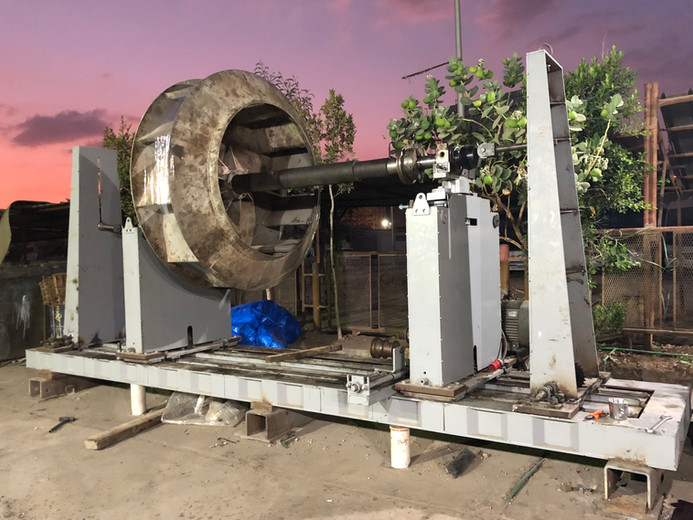
معرض التوازن الديناميكي.
We perform dynamic balancing for shafts from 10 cm to 20 meters and weights upto 40 tons with 0.1 gram residual unbalance. using soft bearing balancing machines
What is dynamic balancing
Vibration will always be an element of any machinery that rotates, and although some levels can be acceptable, the main goal of any rotating equipment is to operate with as little vibration as possible to avoid damage and ultimately extend the lifespan of the machine. Instead of trying to remove all the vibration, therefore, it is essential to carry out searches for machinery balance in order to minimise the vibration to the point at which there is a reduced level of noise.
Balancing is the complex procedure of working to enhance the mass spread of a body so as to rotate in its bearings without the unbalanced centrifugal forces acting on it. When the machine is running in balance, it will work as it should do and in the most efficient way. Whereas if the machine is unbalanced, it risks breakdown and long term inefficiency. The process of static or dynamic balancing will minimise the vibration and reduce the level of noise a machine produces, as well as to extend the life of a machine. But the main question we face is, is static balancing or dynamic balancing best? This post aims to address this.
Static vs Dynamic balancing
There is two types of balancing to be used when balancing large machinery, there is dynamic balancing and static balancing. we use the more accurate way which is dynamic balancing here is the difference between both
Static balancing
When we balance a section of machinery statically, its centre of gravity is located in the axis of its rotation. This process implies that it will remain stationary at the horizontal axis, without applying a braking force. The unbalance will be present even when the rotor is not spinning.
Low friction bearings are used to settle the component so that the heaviest part is at the bottom. We then remove material from the lower portion (heavy side). Or add on top (light side) until it rotates on a true axis. We repeat this process until the point that is heavy disappears and the rotor no longer rotates without assistance.
Dynami balancing
Dynamic balancing involves the adjustment of an object’s balance by adding or removing weight. Firstly, we have to determine the components unbalance. We calculate this whilst it’s rotating at a predetermined speed. The information from this process gives insight into the amount of weight required to counterbalance areas that are either too light or too heavy.
Reducing vibration through dynamic balancing also ensures the machine is running smoothly, with reduced noise. This inevitably prevents premature system failure. A component is only in balance once the rotation does not produce any centrifugal force or couple unbalance as a result.
Before & after balancing
the videos below shows vibrations on a soft bearing dynamic balancing machine before and after dynamic balancing










